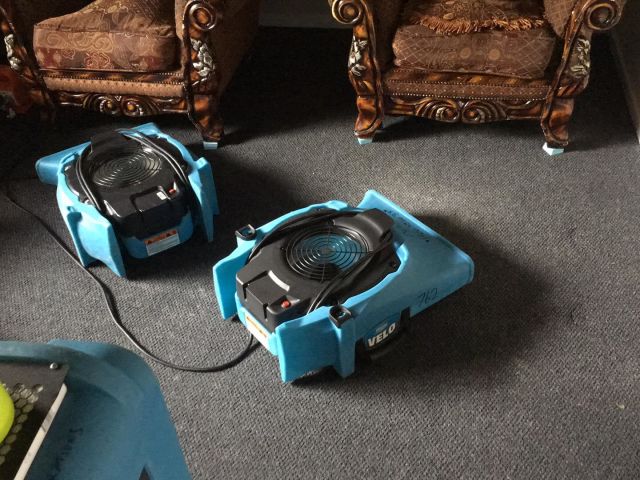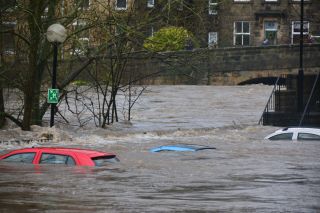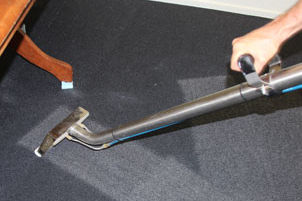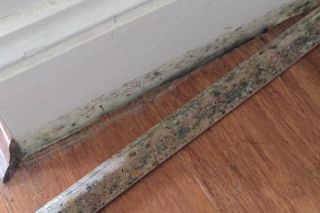Water Damage Restoration Tips
Living in a flood-prone area necessitates being prepared to mitigate and handle the damage caused by water. Problems may also occur due to leaky sinks, broken pipes, roof leaks, foundation cracks, faulty gutters, poor exterior siding, pump failure, and overflow of washing machine or dishwasher.

Living in a flood-prone area necessitates being prepared to mitigate and handle the damage caused by water. Problems may also occur due to leaky sinks, broken pipes, roof leaks, foundation cracks, faulty gutters, poor exterior siding, pump failure, and overflow of washing machine or dishwasher.
Facing the aftermath of any of these culprits can be one of the homeowner’s worst nightmares. It is vital to act immediately and appropriately to reduce the impact on the structure of the property and prevent health problems. Major damages require the professional skills of a water damage restoration contractor, which can cost a lot of money. But, if you think the damage is manageable, dealing with it yourself is a great option.
Do-it-yourself tips for water damage restoration
Stop the source of water
If the overflow is due to plumbing issues, turning off the main water valve will stop the flooding. However, if it is nature-related, you need to wait until the rain stops or the flood subsides.
Evaluate the amount of damage immediately
Evaluating the situation will help you determine if you can handle the damage or seek professional help. It is essential to do the assessment as early as possible to limit the escalation of damage which includes mould growth. Be thorough during the assessment and avoid making assumptions that you may regret afterwards.
Take photos or videos of the damage to the structure and the discarded items before, during, and after the cleanup. You may be needing them for inventory purposes, insurance claims, or future renovation projects.
Assess the kind of water
There are three water categories that you need to be aware of.
Category 1 – It is clean and free from significant contaminants.
Category 2 – Has some contaminants. It comes from floods and overflows of sinks, washing machines, dishwashers, bathtubs, and urine-containing toilets.
Category 3 – Contains a lot of contaminants. It usually comes from sewage backups, toilet overflow with feces, and groundwater floods.
Wear protective gear
Make sure that you are safe from electrical hazards, gas leaks, and chemicals. Wear rubber gloves, boots, long sleeves, eye protection, or respirator masks to prevent electrocution, contamination, slip and fall accidents, and other health risks. Be watchful for snakes, fire ants, rodents, and other dangerous animals.
Remove the standing water
Once it is safe, start removing the pool of water.
Use sponges, mops, or sheets to dry the floor area. Wring saturated cleaning materials in a bucket and dump the water away from the property.
Extract water from surfaces, counters, and furniture using a towel. Work in sections to limit the foot traffic on the wet floor or carpet. Constant walking across the carpeting will wear it down faster.
If the water is a few inches deep, using a bucket or pump will help you bail it out.
Begin the cleaning and drying process
Mould can grow within 24 hours, so it is vital to clean and dry the affected area.
Remove the furniture, rugs, carpets, bedding, documents, and other items from the room. Brush and wash away the dirt from the solid furniture immediately. Air dry them in the roofed patio or porch to increase the chances of salvaging the items.
Open your windows, closet windows, and cabinet to dehumidify and hasten the drying time. Ventilation is beneficial to prevent moisture that hastens the growth of bacteria and mould.
Save important documents. Put them in a dry area. Unfortunately, you need to discard some things that are totally drenched and difficult to dry out.
Run your vacuum cleaner over the walls and floors. Even if the walls appear unaffected, cleaning, disinfecting, and drying them is necessary to prevent odour, mould, and structural decay.
Check hidden cavities under the furniture, cabinets, mechanical spaces or behind walls to make sure that there is no stored water.
For stained and damp clothes, treat them first with a prewash spray before washing them with laundry detergent and rinsing them with cold water.
Soaked upholstered furniture and contaminated mattresses need to be dumped to ensure the safety of the family. Plastic, solid wood, and metal furniture can be cleaned and restored to its former condition. Dry them completely in an exposed area, out of the sun to prevent warping.
To salvage the rugs and carpets, clean and vacuum them as quickly as you can. Methodically suck up the water to maximize the extraction. Use a wet-dry shop-style vacuum instead of the regular vacuum during the process to prevent damage and the risk of electrocution. You can also use absorbent towels to dry your carpet. If they are totally saturated with water, the drying period will be longer.
It is important to do moisture testing of the areas floors and walls after the job is complete to ensure all is dry. You can purchase moisture meters relatively cheap now.
When to call a professional restoration service company?
It is more practical to do the cleaning, drying, and restoration if you have the knowledge, time, and necessary equipment or if it is a minor problem. But, if you think that it is more than you can handle and the risk can cause discomfort and harm to your family, getting a professional contractor is the best option. Moreover, professional assessment and restoration will facilitate your claim for home and flood insurance reimbursement, if needed.
If you require water damage restoration in Brisbane, Sydney or Melbourne, please call us today at 1300 356 633.



